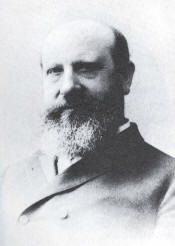George Boleyn, Henry Norris, Francis Weston, William Brereton, and Mark Smeaton Executed, 1536
 |
| Francis Weston |
Anne had already been found guilty, so it was pretty much a foregone conclusion that the men would be found so, as well. Still, in the case of George Boleyn at least, the courtiers were betting ten to one in favor of acquittal. George was a popular man, and had defended himself well at the trial.
Four of the five men were of high station. George Boleyn was the brother of Anne, and so in his case, the charges also included incest. The Boleyn family had risen quickly in the royal court, due in part to Henry's marriage to Anne and his previous affair with George's other sister Mary. Consequently, they had acquired many enemies. Sir Henry Norris was Henry's "Groom of the Stool" in his Privy Chamber. Sir William Brereton was also a Groom of the Privy Chamber. Sir Francis Weston was a gentleman of the court. All four of these men pleaded not guilty to the charges and were sentenced to be hanged, drawn, and quartered. Because they had been in service to the court, their sentence was commuted to execution by beheading. On the scaffold, none of the four made any obvious assertions of their innocence, in order to avoid reinstatement of the harsher penalty, and forfeiture of their estates.
 |
| Anne |
Aristides Won First Kentucky Derby, 1875
His owner didn't intend for him to win. Aristides, the small chestnut thoroughbred that won the first Kentucky Derby, was owned by H. P. McGrath, a gambling parlor owner who had used his profits to enter the world of horse racing. He entered two horses in the first Derby: Aristides, who was expected to be quick out of the gate and force the other horses to wear themselves out early, and Chesapeake, whom McGrath expected to be the real winner. Things didn't work out quite as planned, however..jpg) |
| Aristides |
The first Kentucky Derby was a one and a half mile race, not one and a quarter miles, as it is today. 15 horses competed, and 13 of the 15 jockeys were African Americans. There were 10,000 spectators to the event.
The Derby had been the brainchild of Colonel Meriwether Lewis Clark, Jr., a grandson of the famous explorer William Clark. He had been to Europe in 1972, and seen the Epsom Derby in England and the Grand Prix de Paris. Returning home, he organized the Louisville Jockey Club. Their purpose -- to establish some quality racing facilities in the area. The track was named Churchill Downs, after Clark's relatives, John and Henry Churchill, who had donated the land for the racetrack.
Frederick August Otto Schwarz Died, 1836
 |
| F.A.O. Schwarz |
Schwarz was a German immigrant from Herford, Westphalia. He came to America with his three brothers in 1856, and began working for a stationery importer in Baltimore, Maryland. At that time, it was a common practice for German exporters to place small toys in with the packing for their stationery. Schwarz seized the opportunity and started placing the toys in his windows as attention-getters. Soon the toys were outselling the stationery.
A few years later Schwarz had opened his own shop, the Toy Bazaar. This was followed by additional locations in Philadelphia, Boston, and New York. Today, FAO Schwarz is the oldest toy store in the United States, and the one of the oldest retail establishments of any kind in the country. It was acquired by Toys 'R' Us in 2009.
No comments:
Post a Comment